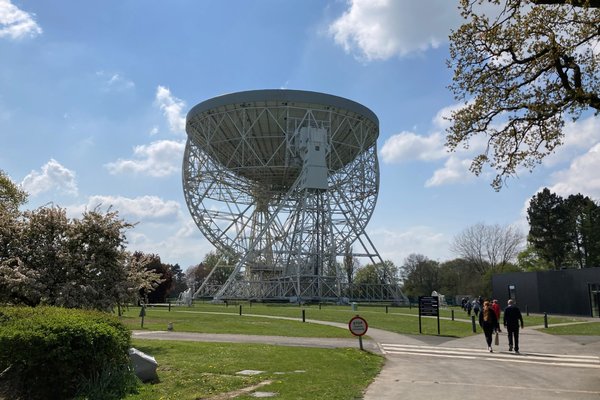United Kingdom
Jodrell Bank Observatory
The Jodrell Bank Observatory, as one the earliest radio astronomy observatories in the world, changed the understanding of the nature and the scale of the Universe.
Part of the University of Manchester, it played a prominent role in the evolution of radio astronomy through several important technological developments. They include the research of meteors, quasars, pulsars, masers and gravitational lenses, and the tracking of space probes at the start of the Space Age. Its very large instruments, such as the dish telescopes Lovell and Mark II have influenced global science.
Community Perspective: Most visits were pre-inscription and a new visitor center has been opened since, which has changed the visitor experience favourably according to Zoë and Jay. Clyde found a very adventurous way in. The site is not accessible by public transport.
Site Info
Official Information
- Full Name
- Jodrell Bank Observatory (ID: 1594)
- Country
- United Kingdom
- Status
-
Inscribed 2019
Site history
History of Jodrell Bank Observatory
- 2019: Inscribed
- Inscribed
- Type
- Cultural
- Criteria
- i
- ii
- iv
- vi
Links
- UNESCO
- whc.unesco.org
- Official
-
- jodrellbank.net — Jodrell Bank Observatory Centre
All Links
UNESCO.org
- whc.unesco.org — whc.unesco.org/
Official Website
- jodrellbank.net — Jodrell Bank Observatory Centre
News Article
- March 15, 2022 bbc.com — Jodrell Bank Observatory to open £21.5m visitor attraction
Community Information
- Community Category
- Secular structure: Science and Education
Travel Information
Recent Connections
-
Perfect Inscriptions
2019 -
Nuclear power
It was the UK's first nuclear warning s… -
Space Exploration
The observatory's Lovell Telescope succ…
Connections of Jodrell Bank Observatory
- History
-
-
Cold War
It played a role in the Cold War through tracking Sputnik 1 (the start of the ‘space race.’), and later tracking early spacecraft from the US and the USSR.See uomhistory.com
-
- World Heritage Process
-
-
Perfect Inscriptions
2019
-
- Human Activity
-
-
Nuclear power
It was the UK's first nuclear warning station
-
- Constructions
-
-
Tunnels
Between Control Centre and Lovell Telescope
-
- Timeline
-
-
Built in the 20th century
From 1945 on
-
- WHS Hotspots
- Science and Technology
-
-
Space Exploration
The observatory's Lovell Telescope successfully tracked the USSR's Sputnik 1, the first artifical Earth satellite, in 1957. At the time, it was the only telescope in the world capable of tracking satellites by radar. Jodrell Bank later tracked US and Soviet spacecraft throughout the Cold War.See en.wikipedia.org
-
Universities
Part of the University of Manchester -
Astronomy and Astrology
"illustrates a significant stage in human history (1940s-1960s) – the transition from optical astronomy to radio astronomy and the associated consequence for the understanding of the Universe through multi-wavelength astrophysics" (OUV)
-
- WHS Names
-
-
Named after individual people
Named after “William Jauderell”, an archer who fought with the Black Prince at the Battle of Poitiers in 1356
-
News
- bbc.com 03/15/2022
- Jodrell Bank Observatory to open £…
Recent Visitors
Visitors of Jodrell Bank Observatory
- Adam Hancock
- Adrian Turtschi
- Alexander Lehmann
- Alex Goh
- alicemears
- Allan Berry
- Andrew_Kerr
- Angela Vandyck
- Argo
- basementonline
- Birgitte Sørensen
- Brett Baumann
- Carrascu
- Caspar
- Cheryl
- ChrisN
- Christravelblog
- Claire Bradshaw
- ClaraHH
- Clyde
- Colossus
- Csaba Nováczky
- Daniel Chazad
- DavidS
- Dimitar Krastev
- Dorejd
- Dr. Caligari
- Elis
- Els Slots
- Enid MC
- Erik Jelinek
- Eva Kisgyorgy
- Fan Yibo
- Farinelli
- finsbury_jo
- flahr
- Gabbro
- George Gdanski
- Harry Mitsidis
- Hubert
- Ian Cade
- Ivan Rucek
- James Bowyer
- janem
- Jasam
- Jay T
- Jesse S 2010
- Jonas Kremer
- Lara Adler
- Laurine
- leckie118
- Luboang
- Luis Filipe Gaspar
- Maciej Gil
- Małgosia Łupicka
- Martina Rúčková
- Matthewsharris
- MaYumin
- MH
- Michael Ayers
- MichaelH
- Mikko
- nan
- PabloNorte
- Patrik
- Paul Schofield
- Peter Lööv
- Petteri
- Philipp Peterer
- Piotr Wasil
- Randi Thomsen
- rogerding
- Roger Ourset
- Roman Bruehwiler
- Rudegirl
- Samy G
- Solivagant
- Squiffy
- Stanislaw Warwas
- Stefan A. Michelfeit
- Stijn
- Svein Elias
- Taotao Chen
- Tarquinio_Superbo
- Thomas Buechler
- Thomas Harold Watson
- TimPick
- Tom Flaten
- Tsunami
- usagi1974
- ValiaVeweth
- V&M
- voyager
- Walter
- Wojciech Fedoruk
- Wo_ko
- zinar7
- Zoë Sheng
Community Reviews
Show full reviews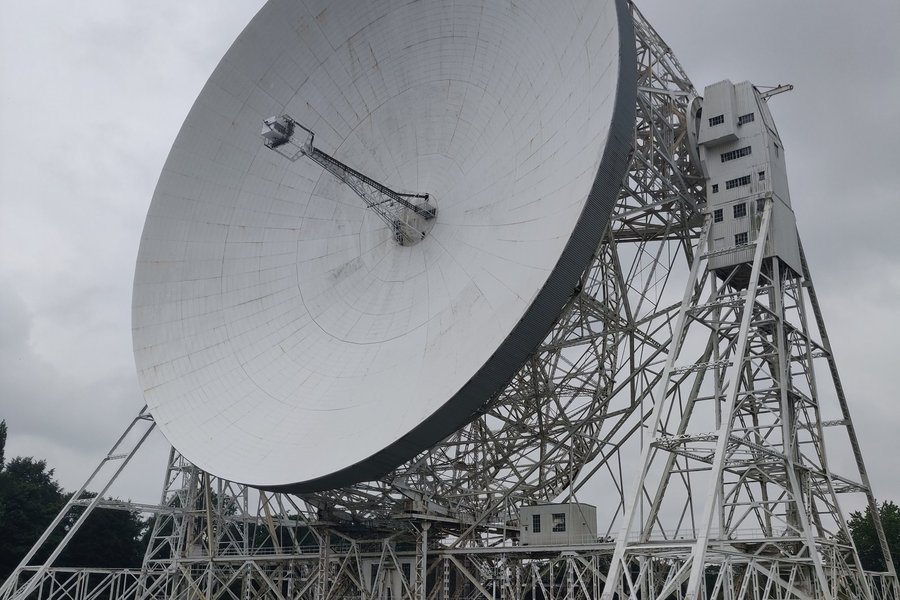
Getting there by public transport is virtually impossible, but Manchester has the best options of getting there as close as possible.
This really is a great achievement for mankind. Other than walking around the impressive telescope itself, the site offers videos, events and some great explanations on the history of the site, astronomy, physics, and everything related, catering to each level of interest, from children to adults. If the topic doesn't really peak your interest, then this might get a little boring after a while, but I spent a full day reading all texts, doing all experiments and watching each and every video. Sadly, some of the interactive things were broken. Some of the texts and videos lack explanation and context to the laymen, which might leave some visitors with more questions than answers.
Strangely enough the only available tickets are yearly memberships coming in at 14.85 GBP (2025). There are additionally priced ticketed events all year round.
Keep reading 1 comment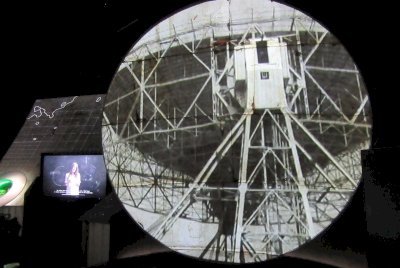
I couldn't very well leave 2023 on an odd number of World Heritage Sites, so I took my car out for a two and a half hour drive today to the nearest World Heritage Site I had yet to visit: Jodrell Bank Observatory. The United Kingdom is replete with astronomical-associated World Heritage Sites, with perhaps the most complete range across history of any country, from Stonehenge and Avebury in the Neolithic, to Maritime Greenwich's Royal Observatory in the 18th and 19th centuries, to Jodrell Bank Observatory covering the mid to late 20th century. But the history of the site has been well-documented in other reviews, so I won't repeat it here. What's new is the visitor center, which opened in 2022, so I'll speak to that.
The First Light Pavilion is a low grassy dome, meant to represent the parabolic dish of the Lovell telescope, though it also seemed to evoke the passage tombs of Maeshowe in Neolithic Orkney and Newgrange in Brú na Bóinne. A thin glass window on the front wall of the pavilion serves as a sort of sun dial, given the day is sunny. It was not. The window is also aligned with Polaris, which was evident in a long-exposure night shot of the sky above the pavilion on display in the Space Pavilion closer to the telescope.
Within the First Light Pavilion there is a movie theater and an exhibition hall, as well as a cafe and an interactive kid's area. I started …
Keep reading 0 comments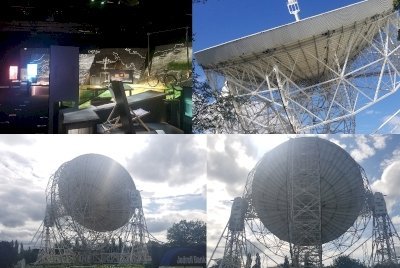
Can understand the low rating. I feel the place has changed since the early days and people reviewing it lowly is because nowadays you get to see and learn A LOT of stuff. There is a requirement to have your phone in flight mode when visiting - interested, but it's not really enforced or reminded again upon parking. You can also see the huge Lovell Telescope from the parking lot so if that's all you want to see you can just take a photo and save the entry fee ;) However, there's more!
Honestly you can book ahead because ever since COVID there have been timed entries but I totally missed my slot and the nice lady at the booth just let us in anyway - I don't think the observatory gets enough visitor's to have you miss out and worst case maybe you need to wait a bit until the mass tourist bus (which don't come here) are gone. The person in front didn't have a slot booked and just bought it on the fly.
Exciting three locations you must visit can be found here.
Short walk from the booth you will find a large, dark museum as seen in my pictures. Reading all this, playing around with gadgets, dressing up as a spy (no kidding) will take you 30 minutes minimum. If you aren't interested in any then I am not sure why you came here because like I said you …
Keep reading 0 comments
I was impressed and disappointed with this site at the same time. I will start with my negative points and then move onto the nicer stuff afterwards.
You can not go up, on or in the Lovell telescope. I wouldn’t normally “tick” something off my list unless I’ve truly experienced it 100%, but according to the staff there this would never be a possibility as it is still in use, and the only people allowed on it are the people that work on it. I feel that if this is the case they should have picked a different observatory that allows visitors, even if it meant charging a lot and pre-booking well in advance.
Now on the subject of charging lots, I had to pay £4 for the parking. I was only at the site for 1 hour, meaning this cost more than many cities charge, not to mention I had to pay my fare ontop of that. The site is in the middle of the countryside and the “gardens” are not yet compete, so until there is more to do/see there I strongly believe that there should be only one charge, the entrance one.
On a lighter note though the telescope looked amazing, I had never seen anything like it in my 24 years of being alive and the whispering satellite dishes were also remarkable (I have since been to multiple cathedrals with whispering galleries, but this was my first experience with anything like it). I …
Keep reading 0 comments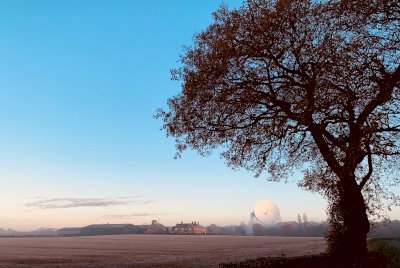
I think this site deserves its world heritage status and it surely fills a WHS niche. It is not the oldest radio telescope in the world but one of the oldest "bigger ones" as far as I could find out. Personally, I find the Arecibo Observatory in Puerto Rico, which is four times bigger in diameter (and six years younger), more impressive. A cross-national nomination would have made sense in my opinion (well played, UK!).
What I did not like so much was the fact that the site's management has made the WH listed smaller Mark II Telescope completely off limits to the public. I understand that astrophysics research is still carried out by the University of Manchester but allowing visitors a closer look and operating such a site would not exclude each other. Nowadays, to have a closer look on the Lovell Telescope, the main one, the visitor has to pay at least 7.65 GBP entrance fee for an adult, plus 4.00 GBP for a parking ticket. These fees give you access to the Lovell Telescope site (protected by a circular fence), a rather boring exhibition in the so-called "Space Pavilion" (the "Star Pavilion" was closed at the time of my visit in November 2019) and the Jodrell Bank Gardens, which were undergoing refurbishment and were partly closed for that. Overall, I found the site overpriced. And to be honest, I took the better pictures from outside the aforementioned area.
That said, staff at the Jodrell Bank …
Keep reading 0 comments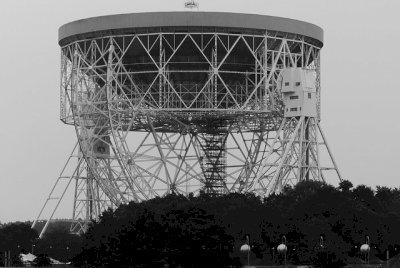
I visited this WHS in July 2019. The only days I could visit happened to be days when regular access is not allowed due to the Bluedot Festival. Not willing to pay the full price for the weekend since I was not interested in the festival, I took my chances knowing that several UNESCO talks were planned for the day I planned to visit. Worst case scenario would be paying around 60 euros for a day pass.
First of all, the expensive outdoor car park (which was free a couple of years ago) was closed because of the festival so I parked for free in one of the country roads with rubble walls close to Blackden Heath. If you don't mind walking in muddy fields (mostly to avoid having electricity cables in your photos), the best views of the Jodrell Bank Observatory are from different fields around Bomish Lane, Blackden Lane and Bridge Lane. Secondly, the area sees LOTS of heavy rain and is quite prone to flooding so keep it in mind. Notwithstanding the heavy rain which was pouring non-stop, I was determined to visit on foot to increase the chances of meeting someone willing to lend me his day pass or finding a way in. So I marched on steadily wearing my windbreaker and waterproof clothes. After taking some photos from different angles, the rain became torrential rain (typical UK summer day, I guess) and I took shelter under a tree.
The overall experience of visiting …
Keep reading 0 comments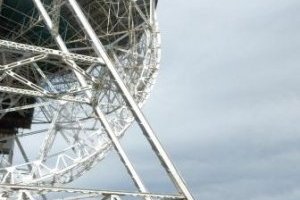
South of Manchester, looming over golden fields and wind-tossed oaks, the superstructure of Jodrell Bank’s Lovell radio telescope dazzled in the July sun. A local landmark, it is visible from motorway and train-line yet always looks out of place in such a resolutely rural part of Cheshire, like a clunking tripod from War of the Worlds. But it is from here that Britain’s scientists turn their faces to the farthest reaches of the cosmos.
Jodrell Bank itself is owned by the University of Manchester, a legacy of that brief moment after the second world war when Manchester was at the cutting edge of technology in a way not seen since the height of the Industrial Revolution saw the city sucking in workers to feed its ever-thrumming textile looms. Alan Turing, a code-breaker during the war, experimented with programmable and stored memory computers at the university. And Bernard Lovell, fresh from his war-time research on radar, persuaded the Botany department to let him set up an experimental radio telescope on its Cheshire site with the idea that sound could reach further into space than mere sight.
Lovell’s dream was to build the Mk I radio telescope, later renamed in his honour. The Mk I is a 250-foot-diameter dish, fully steerable around a central axis, designed to suck in ‘cosmic rays’ and bounce them up to a central receiver suspended above the bowl. Construction began in 1952 and soon ran over budget. It was saved, by all people, by the …
Keep reading 0 comments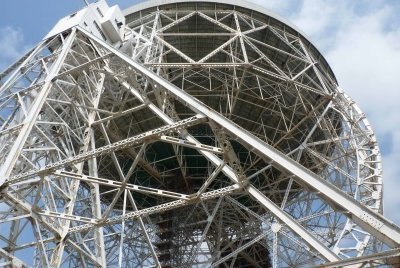
In July 2018 we took the opportunity to make our first ever visit to Jodrell Bank. We had seen it many times in the distance but, whilst we were in the area and with inscription possible/ probable (??) in 2019, it seemed worthwhile seeing fully what it has to offer. As the site is likely to receive heightened interest from WH travellers in the upcoming months the following info might be of interest both to those who are considering whether/when to visit as well as to those who will follow events from afar.
a. We arrived to find frenetic activity ongoing to complete a car park extension. Bad news of course! As from 5 Sept 2018 the, currently free, parking will cost £4 per vehicle in addition to the (as yet!) unchanged entry fees (Trying to visit the observatory by public transport could be an “adventure” - look to reach the village of Goostry, still a 30 min walk away!). Behind the car park, yet more construction was taking place. A new “First Light Pavilion” is going up with completion currently scheduled for late 2019/early 2020.
b. There are already 2 “pavilions” containing exhibitions for visitors to the site - The “Planet Pavilion” and the “Space Pavilion”. At the moment the former doubles as ticket office/cafe but also houses scientific displays whilst the latter showcases the main scientific aspects related to radio astronomy (a third building, the Star Pavilion, is only used for special …
Keep reading 0 comments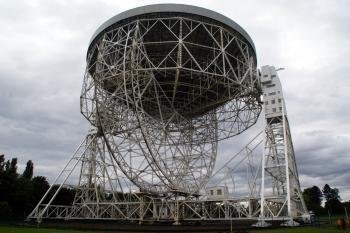
When we planned our trip through Wales and Central England in May and June 2017 we were not aware of the fact that the Jodrell Bank Observatory would be the next UK nomination, aiming for inscription in 2019. In hindsight, it was a good idea when we spontaneously decided to make a detour to the Cheshire East district, a few miles south of Manchester.
Although I have a soft spot for technical and scientific sites, I did not know much about the observatory prior to our visit. Except of the entry on the tentative list, I knew Jodrell Bank only because it is mentioned in the novel "The Hitchhiker's Guide to the Galaxy" by Douglas Adams (the telescope is also shown in the film adaption).
Jodrell Bank is home of the Lovell Telescope, a steerable radio telescope with a diameter of 76 metres. When it was built in 1957, it was the largest of its kind in the world. Today, it is the third largest steerable radio telescope. The Lovell Telescope is the main sight at Jodrell Bank. There is a semicircular path around the telescope, close to the outer rail on which the telescope is moved, so the mechanics of the structure and the supporting towers are well visible. Information panels explain how the telescope works and what it is used for. On our visit the parabolic antenna was aligned towards the zenith, so we could only see the outside of the bowl (photo).
More information …
Keep reading 0 comments
